Blue Haze
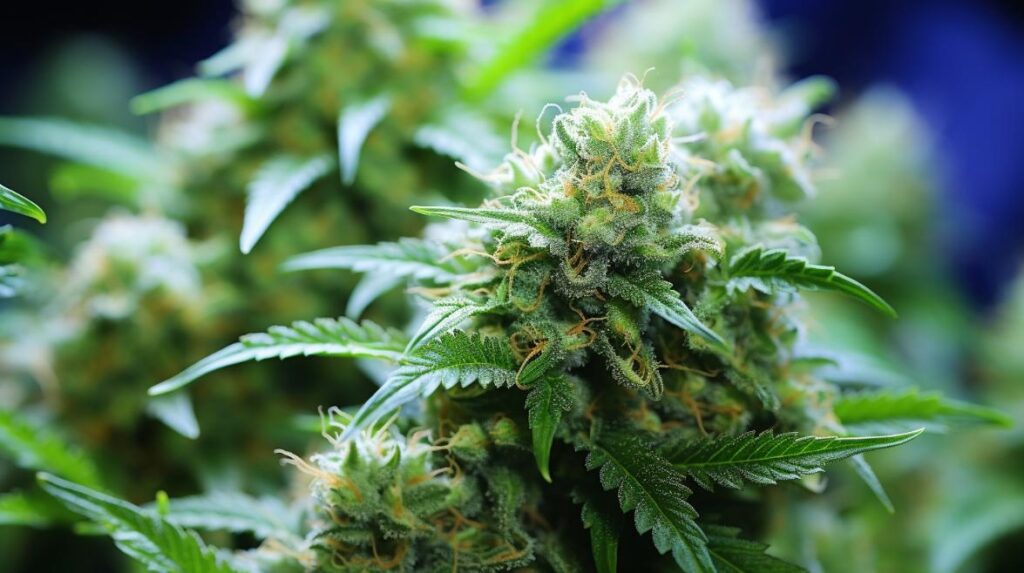
The Blue Haze strain, a notable hybrid of Blueberry and Amnesia Haze, presents a fascinating case study in the synthesis of cannabis genetics. Its sativa-dominant profile, characterized by a THC content of 18-20%, suggests significant euphoric and uplifting effects that have attracted attention in both recreational and medicinal contexts. The complex flavor profile—melding notes of berry, citrus, and spice—further enhances its appeal. However, the strain’s impact extends beyond its sensory characteristics, raising intriguing questions about its broader applications in stress relief and mood enhancement. As we explore its diverse benefits, what might this tell us about the future potentials of hybrid strains in the evolving cannabis market?
Key Takeaways
- Blue Haze is a sativa-dominant hybrid, combining Blueberry and Amnesia Haze genetics.
- Features high THC levels ranging from 18-20%, with minimal CBD content.
- Known for its uplifting and euphoric effects, ideal for stress relief and mood enhancement.
- Exhibits a complex flavor profile of berry, citrus, sweet, and spice notes.
- Typically grown indoors with a 9-week flowering time and a yield up to 350g/m².
Genetic Lineage
The Blue Haze strain, a notable hybrid, originates from a cross between the Blueberry and Amnesia Haze strains, showcasing a mostly sativa genetic composition. This blend results in a plant that inherits the robust growth patterns typical of Haze varieties, alongside the flavor profile and coloring of the Blueberry strain. Its genetic structure leans heavily towards its Thai sativa landrace origins, contributing to its tall stature and elongated flowering periods, which are characteristic of sativa-dominant hybrids.
Despite its predominant sativa influence, some breeders have experimented with Blue Haze to enhance its indica characteristics, creating variants that might exhibit a more indica dominant profile. This breeding tweak typically aims to shorten the flowering time and increase the plant’s resilience to colder climates, making it more versatile for cultivation in varied environments.
The ability to manipulate its genetic dominance makes Blue Haze an interesting subject for those in the cannabis cultivation community, offering insights into the impact of genetic lineage on growth patterns, yield, and cannabinoid profiles. Such modifications are essential for adapting the strain to different market needs and optimizing its agricultural performance.
THC/CBD Content
How does the cannabinoid profile of Blue Haze, with THC levels ranging from 18-20% and minimal CBD, influence its cultivation and consumer demand?
The high THC content makes Blue Haze particularly appealing to cultivators aiming to meet the market’s demand for potent, psychoactive effects. Cultivation practices may focus on optimizing conditions that enhance THC production, such as controlled lighting, nutrient regimes, and meticulous monitoring of environmental factors like humidity and temperature.
The minimal CBD content in Blue Haze indicates its role as a THC-dominant strain, which is a critical selling point. In the cannabis market, strains with high THC levels, such as Blue Haze, often command higher prices and are sought after by consumers looking for intense euphoric and relaxing experiences. This consumer preference drives cultivators to prioritize strains with elevated THC percentages, ensuring they cater to a lucrative segment of the market.
Furthermore, the specific THC/CBD ratio in Blue Haze influences its cultivation strategies. Growers might select specific fertilizers and growth enhancers that are known to boost THC content while maintaining the strain’s genetic integrity and desired cannabinoid profile. Understanding and manipulating the cannabinoid synthesis pathways through advanced cultivation techniques becomes essential for maximizing yield and potency.
Terpene Profile
Blue Haze’s distinctive terpene profile, featuring beta-caryophyllene, myrcene, and pinene, greatly influences both its aromatic appeal and therapeutic potential. The presence of beta-caryophyllene imparts a spicy and herbal essence that is characteristic of the Haze family, distinguishing Blue Haze from other variants by its robust and pungent scent profile. This terpene is not only pivotal for adding depth to the flavor but is also noted for its interaction with the body’s cannabinoid receptors, suggesting a complex synergy with cannabinoids that could enhance the strain’s overall effect profile.
Myrcene, another significant component, contributes to the strain’s earthy notes, seamlessly blending with its more vibrant counterparts to produce a uniquely relaxing aroma. In cultivation, achieving the right myrcene levels might involve careful monitoring of growing conditions, particularly humidity and temperature, which are known to influence terpene synthesis.
Lastly, pinene adds a counterbalance with its sharp, piney undertones, which not only enhance the cerebral qualities of the aroma but might also contribute to a sense of alertness and mental clarity in the user experience. Advanced cultivation techniques, such as controlled stress and precise light exposure, are critical in maximizing the expression of pinene and other terpenes in Blue Haze, ensuring a consistent terpene profile that meets consumer and medicinal expectations.
Effects
Reported effects of the Blue Haze strain encompass feelings of uplifted energy and happiness, as experienced by a significant number of users. This phenotype, rich in THC, is noted for its potent cerebral effects that enhance mood and invigorate the senses. The uplifting impact is primarily attributed to the high THC content, which interacts with the body’s endocannabinoid system to elevate mood and increase energy levels.
The sensory experience of Blue Haze is complemented by its distinct flavor profile, which includes blueberry, berry, and spicy/herbal notes. These flavors contribute to the overall sensory experience and appeal of the strain, making it a favorite among connoisseurs and casual users alike.
The following table summarizes the primary effects and related factors of the Blue Haze strain:
| Effect | Description | Related Factor |
|---|---|---|
| Uplifted Energy | High energy levels, promotes activity | THC Content |
| Happiness | Elevates mood, enhances pleasure | THC Interaction |
| Dry Mouth | Common discomfort experienced by users | Hydration Balance |
| Paranoia | Rare psychological effect in sensitive users | THC Sensitivity |
Understanding these effects is important for both users and cultivators, as they highlight the significance of THC potency and its impact on the overall experience.
Medical Uses
Understanding the psychoactive and sensory impacts of the Blue Haze strain sets the stage for exploring its therapeutic applications in medical contexts. With a potent THC content reaching up to 26%, this cultivar demonstrates significant efficacy in the management of chronic pain and acute headaches. Its robust terpene profile, rich in myrcene, not only enhances its pain-relieving qualities but also positions Blue Haze as a viable candidate for addressing symptoms of insomnia and anxiety.
Medical cannabis practitioners often highlight the importance of terpene synergy in enhancing therapeutic outcomes. In the case of Blue Haze, myrcene’s sedative properties are complemented by the strain’s high THC levels, creating a holistic effect that can notably alleviate discomfort without necessitating pharmaceutical painkillers. This makes it particularly valuable for patients seeking alternative treatments.
However, due to its high psychoactivity, dosage control is vital. Initiating treatment with lower doses can mitigate potential adverse effects such as paranoia and dizziness, particularly in individuals with lower THC tolerance. This cautious approach ensures that the therapeutic potential of the Blue Haze strain is harnessed effectively, optimizing patient outcomes while minimizing risks. Such strategic use underscores the importance of tailored cannabinoid therapies in modern medical practice.
Flavor and Aroma
The main aroma profile of the Blue Haze strain, characterized by blueberry notes, plays a pivotal role in its sensory appeal to consumers. This particular phenotype of Blue Haze Marijuana, renowned for its olfactory signature, combines a complex bouquet of sweet and fruity elements with a nuanced hint of spice. The volatile organic compounds responsible for these aromas are mostly derived from its unique terpene profile, which includes myrcene and limonene. These terpenes not only contribute to the scent but also enhance the overall therapeutic effects of the strain.
In terms of flavor, Blue Haze Marijuana offers a palatable experience that mirrors its aromatic qualities. Consumers report a harmonious blend of berry and citrus flavors upon consumption, underscored by sweet undertones that enrich the tasting experience. This flavorful complexity is particularly appreciated in the cannabis connoisseur community, where the depth and richness of taste are highly valued. The subtle spice notes add an extra layer of sophistication, making Blue Haze a preferred choice for users seeking a multi-dimensional flavor profile in their cannabis selection. The consistency in flavor and aroma underscores the meticulous cultivation practices essential in maintaining the strain’s distinctive characteristics.
Appearance
Blue Haze Marijuana exhibits buds that are not only dense but also adorned with a frosty layer of trichomes, highlighting its visual appeal and high resin content for extraction. This characteristic is pivotal for cultivators focusing on producing extracts, as the abundant trichomes facilitate a higher yield of cannabinoids when processed.
In terms of coloration, Blue Haze buds present a fascinating palette that includes various hues of green, intermingled with purples and striking blues. These colors are not just a visual delight but indicate a complex phytochemical profile, typical of hybrid strains such as Haze. The presence of vibrant orange or red pistils adds a dramatic contrast, enhancing the strain’s overall bag appeal and marketability in the competitive cannabis industry.
The sticky texture of the buds further underlines the strain’s extraction potential. This tactile aspect is due to the resinous nature of the trichomes, which are copiously produced throughout the flowering phase. For cultivators and consumers alike, the sticky feel is often synonymous with potency and a rich terpene profile, promising a rewarding experience whether the product is used in its natural bud form or processed into concentrates.
Grow Information
While appearance factors play an important role in marketability, the growing process of Blue Haze requires careful attention to achieve best yields and health. This Haze strain, known for its distinctive characteristics and moderate yield potential, demands a nuanced approach to cultivation, particularly in managing its susceptibility to mold and the risks associated with overfeeding.
The cultivation of Blue Haze, with its photoperiod dependency, requires a controlled light cycle to trigger flowering, typically a 12/12 hour light/dark regime. Given its medium growth difficulty, it is best suited for those with some experience in cannabis cultivation. Adequate spacing to allow air circulation and careful monitoring of humidity levels are critical to prevent mold buildup, a common issue with this strain.
Here is a concise table with essential grow information for Blue Haze:
| Aspect | Detail |
|---|---|
| Difficulty Level | Medium |
| Flowering Time | 9 weeks |
| Indoor Yield | Up to 350g/m² |
| Plant Height | ~1.5 meters indoors |
| Key Considerations | Susceptibility to mold, risk of overfeeding |
Understanding these specifics will enable cultivators to optimize conditions and achieve healthier growth and better yields of the Blue Haze strain.
Adverse Effects
Commonly, users of Blue Haze may experience adverse effects such as dry eyes, dry mouth, and occasional paranoia. These symptoms, while generally mild, are important considerations for both consumers and cultivators.
The phenomenon of dry mouth, clinically known as xerostomia, arises due to the interaction of the strain’s cannabinoids with the salivary glands, leading to decreased saliva production. To mitigate this, users are advised to maintain adequate hydration before, during, and after consumption.
Additionally, the psychoactive properties of Blue Haze can sometimes induce anxiety and paranoia, particularly in individuals prone to these conditions or those who consume higher doses. For this reason, a cautious approach to dosing is recommended, especially for novice users or those with a sensitivity to THC-rich products. Starting with a low dose allows the user to gauge their tolerance and adjust consumption accordingly.
To enhance user experience and minimize adverse effects, cultivators might focus on strain-specific growing techniques that could potentially modulate cannabinoid profiles, thereby influencing the severity and frequency of these undesirable effects. This industry-aware approach not only improves the consumer experience but also enhances marketability and user safety in the competitive cannabis market.
Comparisons with Similar Strains
Understanding the unique properties of Blue Haze in comparison to similar strains offers insights into its cultivation challenges and market positioning. Blue Haze, a crossbreed of Blueberry and Amnesia Haze, stands out in the cannabis market primarily due to its genetic composition and sativa dominance, inherited from the Thai sativa landrace. This genetic lineage influences both its cultivation attributes and its distinctive berry and spicy flavor profile, setting it apart from strains with similar origins.
Blue Haze’s comparison with other sativa-dominant hybrids highlights its unique cultivation requirements. Cultivators must manage its sativa traits, which typically involve a longer flowering period and a taller plant stature. This demands more vertical space and extended care duration, contrasting with more compact indica-dominant strains that might share its average THC levels but differ in growth patterns.
Moreover, the average THC content in Blue Haze is pivotal for its market appeal. While similar strains might compete in terms of THC potency, Blue Haze’s combination of high THC levels and specific terpene profile makes it particularly popular among users seeking both therapeutic benefits, like stress and anxiety relief, and uplifting, energetic effects. This dual appeal secures its distinct position in the cultivar market, balancing user demand with cultivation practicalities.
Research and Studies
Recent research into the Blue Haze strain highlights its significant terpene profile, which plays a key role in delivering its noted therapeutic effects. The presence of beta-caryophyllene, myrcene, and pinene not only contributes to its unique aroma but also enhances its efficacy in treating various ailments. This synergy between terpenes and cannabinoids, often referred to as the ‘entourage effect,’ maximizes the therapeutic potential of the Blue Haze strain.
Key findings from studies on Blue Haze include:
- Beta-caryophyllene: Known for its anti-inflammatory properties, aiding in the relief of pain and swelling.
- Myrcene: This terpene has sedative qualities that help in reducing insomnia and promoting relaxation.
- Pinene: Offers improvement in airway function, which can benefit those suffering from asthma or other respiratory issues.
- High THC levels: Responsible for the strain’s powerful euphoric and relaxing effects, making it effective against anxiety and stress.
- Low CBD content: Highlights the need for cautious dosing to prevent side effects such as paranoia and dizziness.
Understanding these components is essential for both consumers seeking specific health benefits and cultivators aiming to optimize growth and potency in their crops.
History and Origin
The Blue Haze strain, a dynamic hybrid, originated from the intentional crossbreeding of the Blueberry and Amnesia Haze strains, inheriting a rich genetic lineage from its sativa-dominant progenitors. This cultivar combines the robust, fruity flavors of Blueberry with the cerebral intensity of Amnesia Haze, itself a descendant of the Thai sativa landrace. This genetic background contributes to Blue Haze’s high THC levels, typically ranging between 18-20%, and its noted euphoric and uplifting effects.
Breeders have explored various phenotypes of Blue Haze, adjusting the indica/sativa balance to fine-tune its growth characteristics and psychoactive effects. These modifications cater to diverse grower preferences and consumer demands within the cannabis industry, highlighting the strain’s versatility and broad appeal. The predominant sativa influence in Blue Haze makes it a preferred choice for users seeking relief from stress and a boost in mood, without the heavy sedative effects often associated with indica-dominant strains.
Moreover, the cultivation of Blue Haze requires an understanding of its unique growth patterns and flowering cycles, knowledge that is essential for achieving best yields and maintaining the integrity of its genetic heritage.
Frequently Asked Questions
Is Blue Haze a Sativa or Indica?
Blue Haze primarily exhibits sativa characteristics, with genetic roots tracing back to Thai sativa landrace, making it about 80% sativa. It is favored for its uplifting effects and energetic properties in cultivation circles.
What Is Blue Haze?
Blue Haze, a cannabis hybrid, combines the genetic backgrounds of Blueberry and Amnesia Haze. Cultivated primarily for its euphoric effects, this strain features a complex berry aroma and is suitable for intermediate growers.
Is Blue a Sativa or Indica?
Blue Haze primarily exhibits sativa characteristics, stemming from its genetic background, including Thai sativa landraces. This lineage emphasizes cerebral, energetic effects, making it suitable for daytime use within the cannabis cultivation industry.
Is Haze a Sativa or Indica?
Haze is primarily a sativa strain, renowned for its sativa-dominant genetic origins that contribute to its cerebral and uplifting effects, making it suitable for daytime use in both recreational and therapeutic contexts.

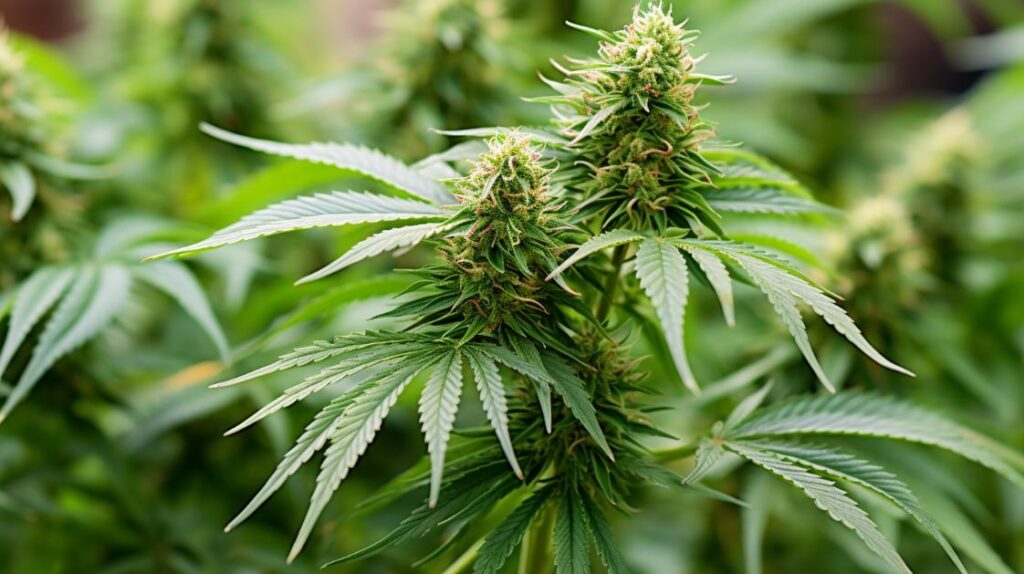
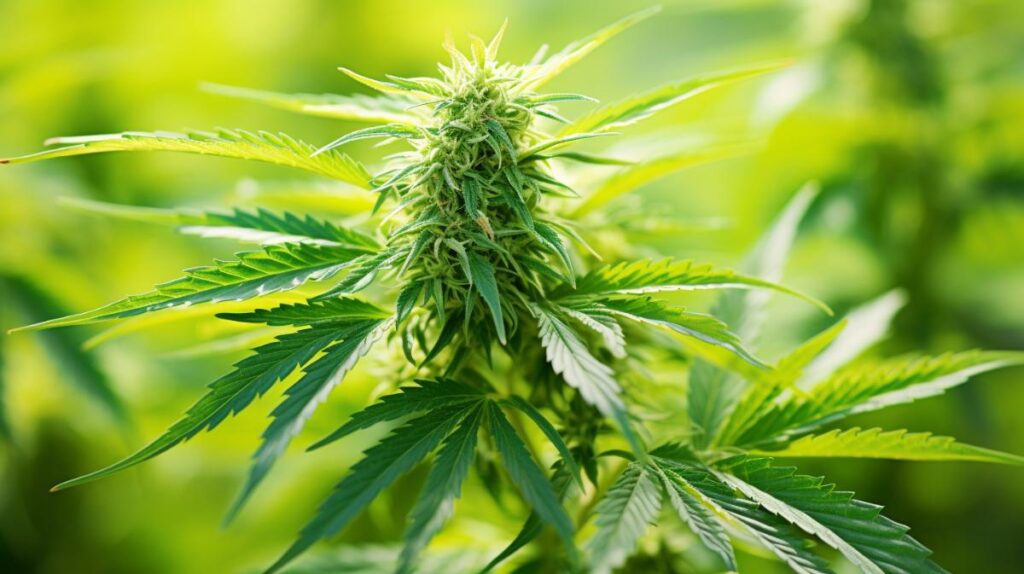
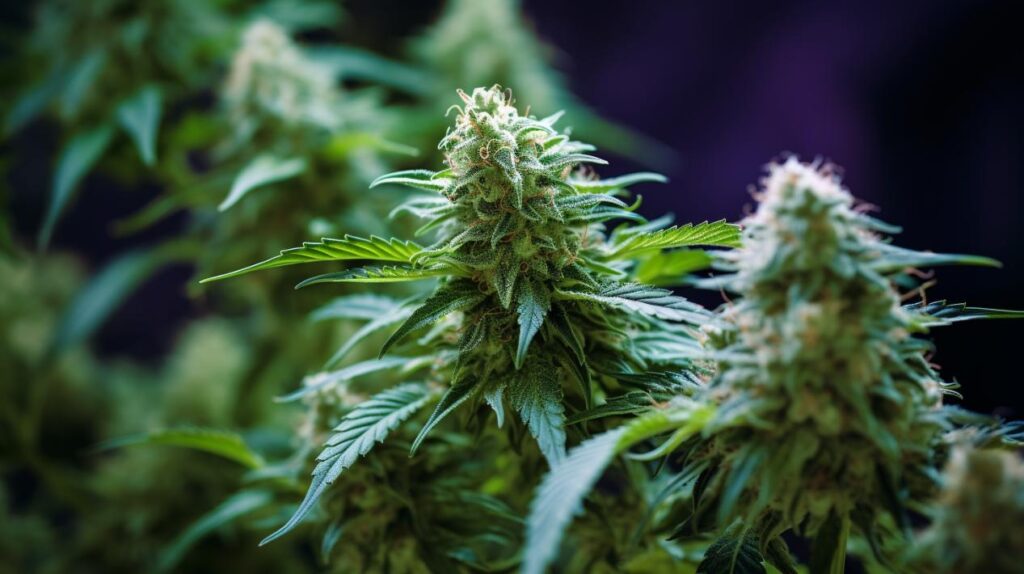
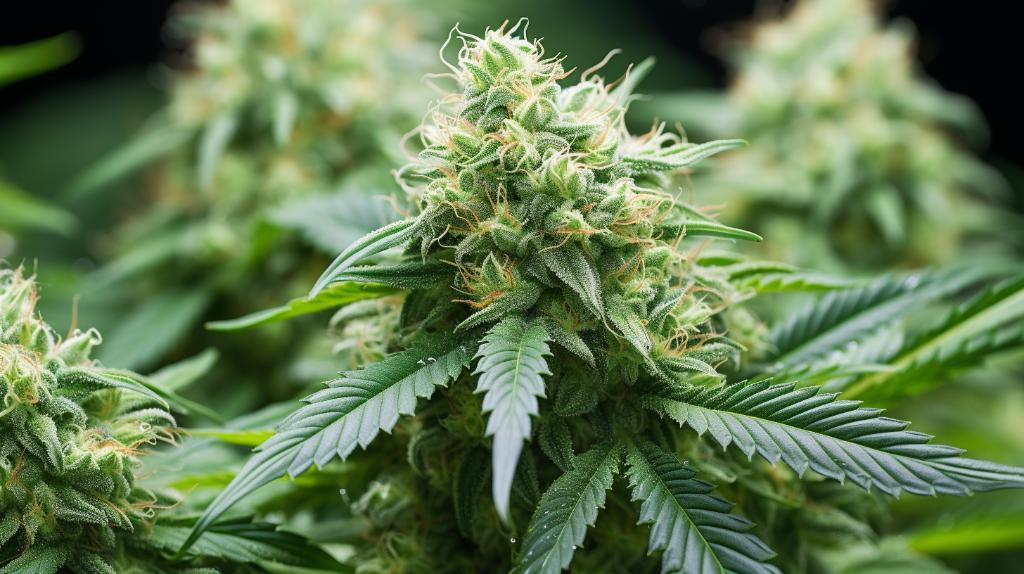
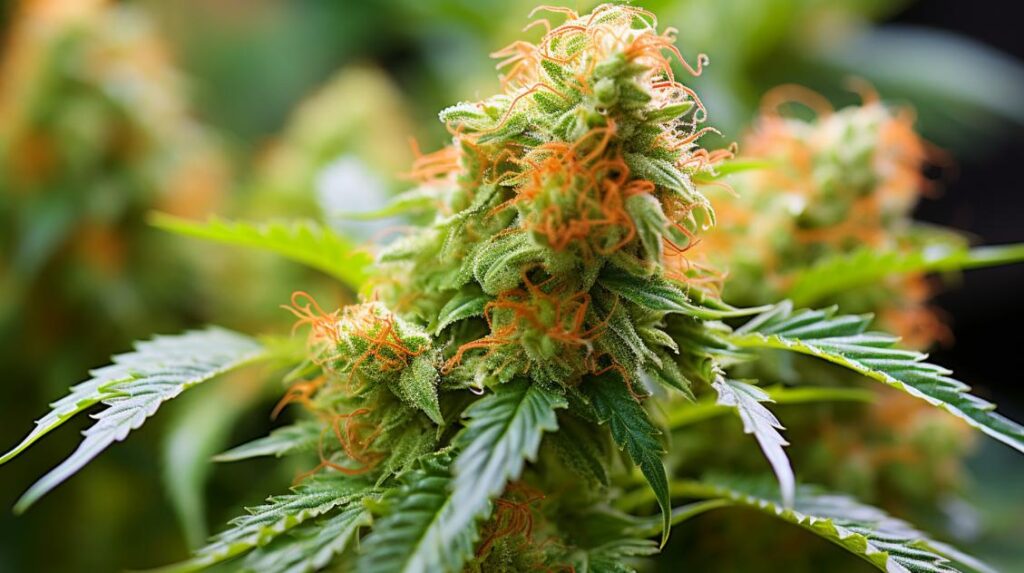

Responses